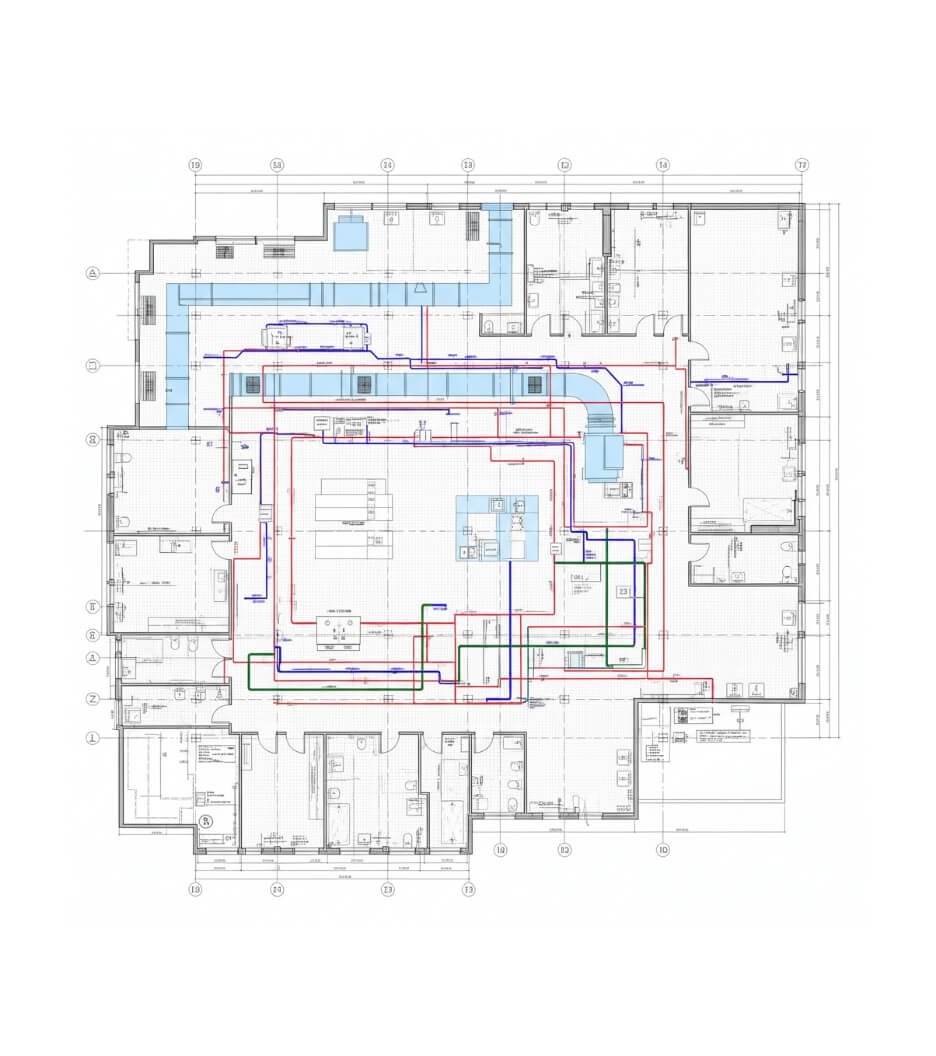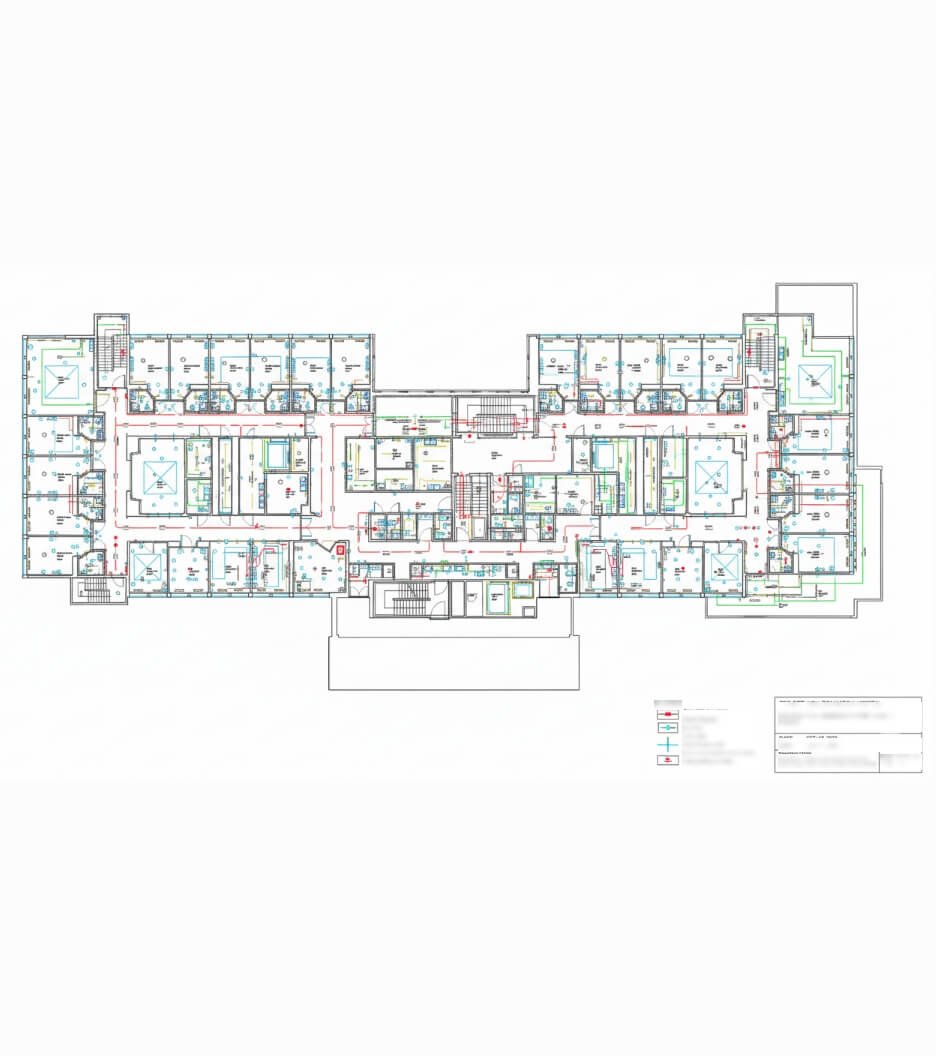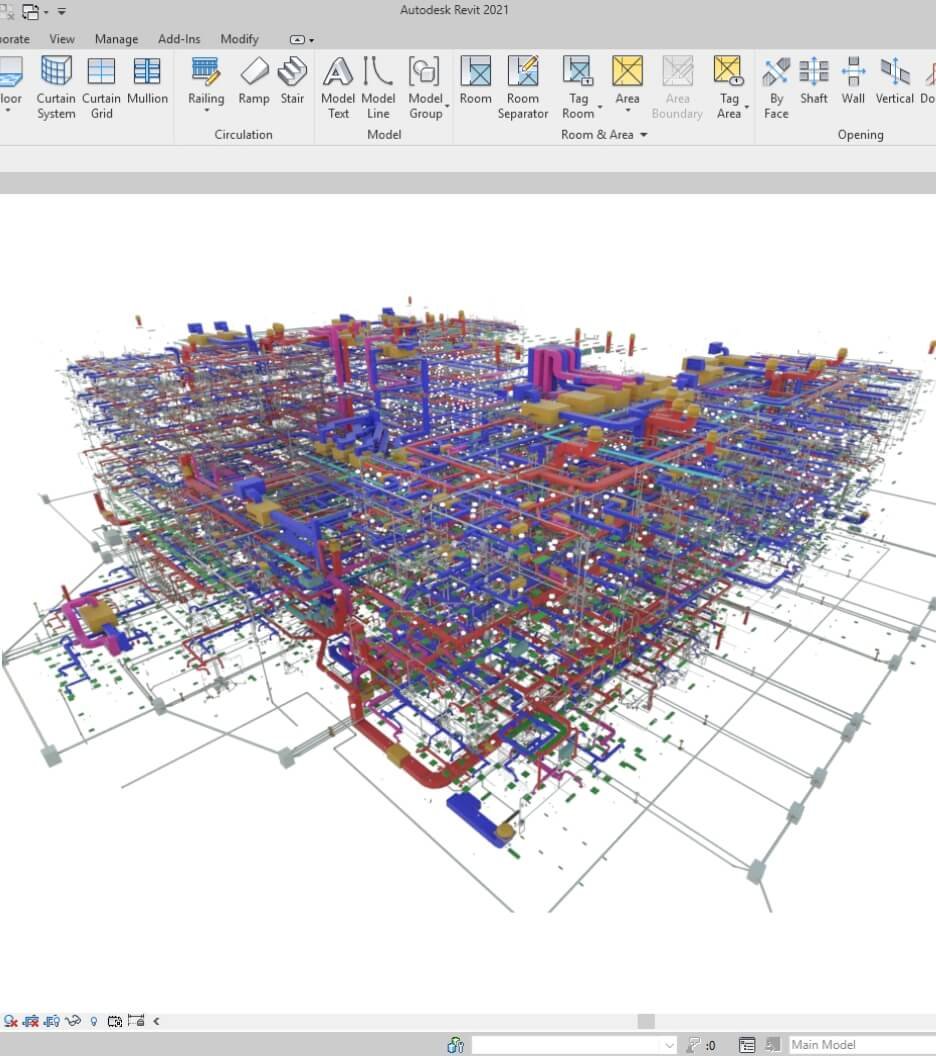 Mahipal Jadeja
Mahipal Jadeja
MEP BIM Services Role in Healthcare Facility Construction
 Mahipal Jadeja
Mahipal Jadeja
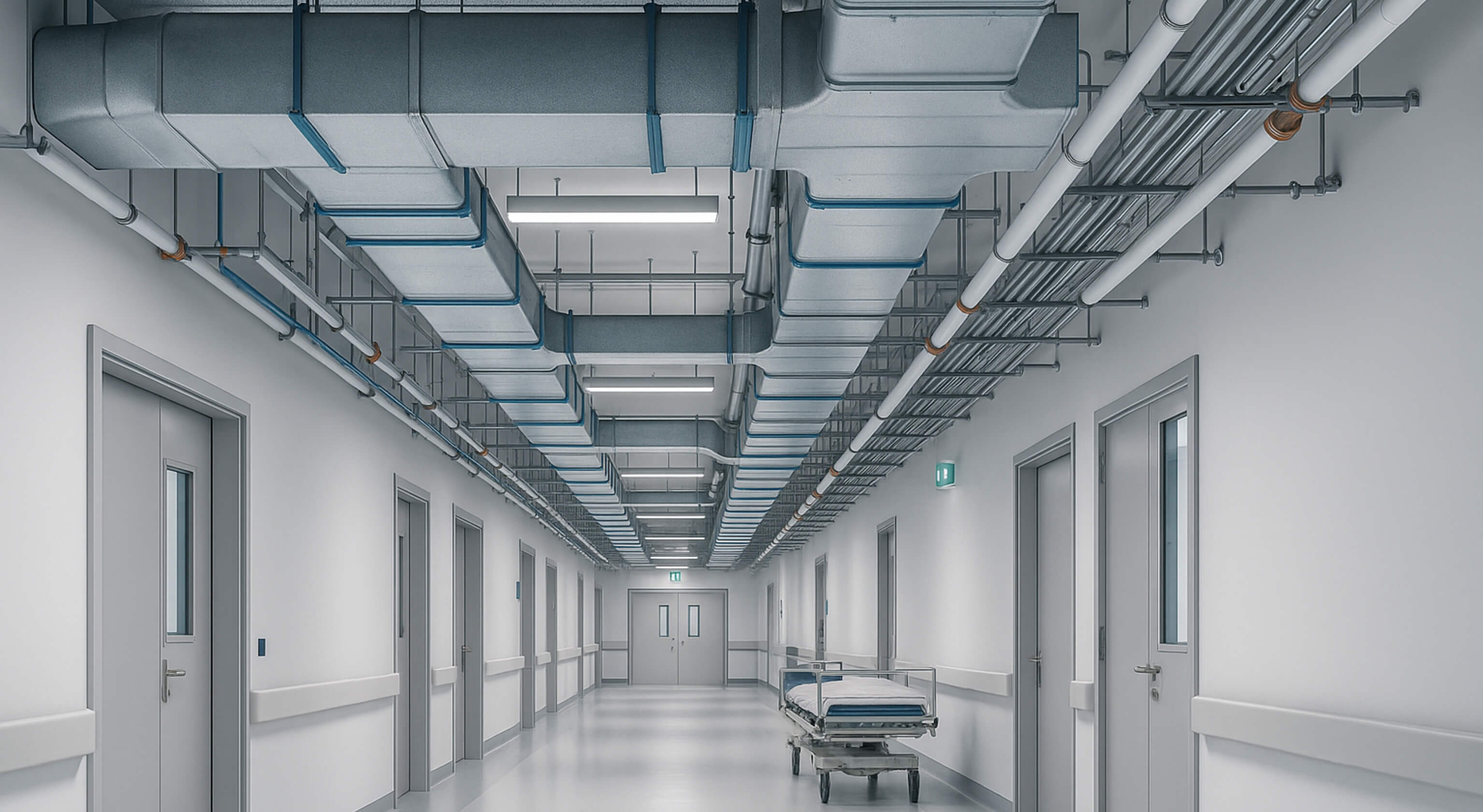
Send Us Your Requirement
Healthcare is a vast and evolving sector with critical demands on accurate facilities. Hospitals, healthcare centers, clinics, and high-end facilities require high-end, precise, and efficient construction. Accuracy is one of the key aspects of a project’s success, as it directly impacts patient safety, patient care, and overall facility performance. The hospital design and construction process must entail precision to ensure functional spaces, proper ventilation, effective infection control, and other essential elements.
Due to several aspects, healthcare facilities are complex building environments that must provide safe, reliable, and comfortable conditions for both patients and staff. In the realm of architecture and construction, traditional practices have often fallen short due to inefficiency, a high risk of errors, time-consuming processes, over-budgeting, and more. As advancements in technology reshape the AEC sector, professionals have numerous ways to enhance the quality of projects and overcome complex design challenges.
With building information modeling, architects, designers, and engineers ensure precision in design while reducing the scope of errors. Similarly, for healthcare facility construction, BIM modeling services play a crucial role in bringing the desired outcomes. However, hospitals, clinics, specialized medical centers, and other medical facilities demand the utmost accuracy in various aspects to maintain patient and staff safety. Given the critical nature of healthcare construction, MEP BIM modeling is a significant and holistic approach to ensure a facility’s safety and accuracy.
The role of mechanical, electrical, and plumbing, along with fire safety, in healthcare facility construction brings precise outcomes, coordination, and the overcoming of complex design challenges, among other benefits. As a matter of fact, MEPF BIM services meet the demands of healthcare operational efficiency along with practical solutions for enhancing the overall performance of the facility. MEP is a significant part of the architecture and construction landscape, serving as the heart of any infrastructure.
As a key player in the construction process, the integration of synchronized, accurate, and efficient MEP components ensures a safe environment, proper HVAC, an efficient electrical system, and a systematic plumbing system. Sophisticated MEP BIM modeling for hospitals and other healthcare centers provides precise development of a safe environment and ensures reliable conditions for patients, visitors, and staff. MEP is a key player in the complex design of healthcare facilities, enabling AEC professionals to enhance and maintain the accuracy in medical facilities. Explore more in detail how MEP BIM modeling serves for healthcare construction projects.
Upscale Healthcare Facility Design with MEP BIM Services
Connect Today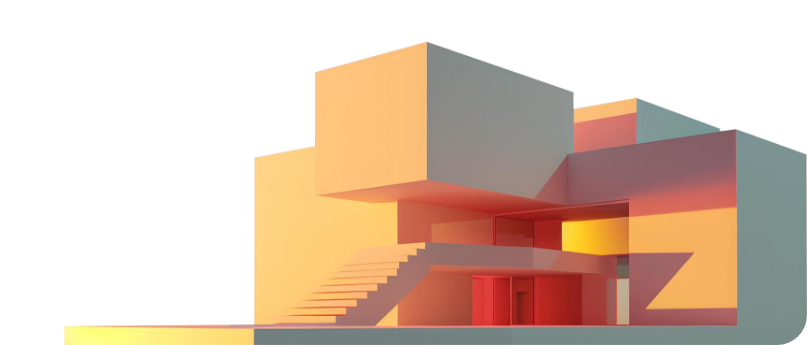
Complex Nature of Healthcare MEP Systems
Healthcare is a vast sector that demands precision and reliability in construction. The medical infrastructure differs from commercial or residential settings, as it requires specialized care units, infection control measures, operating rooms, diagnostic laboratories, and more. Medical infrastructure must support a variety of aspects to ensure patient safety, as well as the safety of visitors and staff. Considering the complex nature of healthcare construction, it requires specialized skills and expertise to ensure precision, reliability, and safety in the building. As the architecture and construction industry conceptualizes and plans the entire project with BIM modeling services, MEPF BIM services become a vital aspect.
Every type of infrastructure requires MEP systems for ventilation, heating, electrical, plumbing, and fire safety. All these components ensure a comfortable and livable environment for occupants. However, for healthcare facility construction, MEP is a vital aspect, considering the complex environment and the demand for highly accurate and efficient systems for clinics, hospitals, medical centers, labs, and other medical facilities. Mechanical, electrical, plumbing, and fire safety facilities accurate operational performance of the healthcare facility. Unlike commercial or residential buildings, critical care units, ICUs, labs, and more demand precision for the safety of patients. The following are some of the key factors of hospital infrastructure design using BIM.
- 24/7 operation: Since hospitals and other medical centers operate 24/7, all building systems, from HVAC to water supply to electrical power, must be carefully drafted and maintained over time. With the help of MEP shop drawings, implementation, as well as project maintenance, becomes efficient, reliable, and accurate.
- Building regulation: One of the crucial aspects of the healthcare MEP system is strictly adhering to building codes and standards. For medical facilities, rules, codes, and standards are stricter than other building types. For example, NFPA, CD, ASHRAE, and more are vital and specific requirements in MEP systems for safety.
- Specialized medical equipment: Medical facilities have complex medical equipment that requires power or cooling systems. MRI machines, life supports, and more examples of equipment where precision in MEP systems is a must.
These are key factors showcasing the importance of Revit MEP for healthcare facilities. In fact, to ease complexity and ensure precision with high-quality design, AEC professionals leverage multiple approaches that assure the safety of patients, staff, and visitors. MEP drafting services also ensure that the design of each technical component is precisely done with the given dimensions, space, and geometry of the project. In the modern architectural era, MEP systems have played an integral part in the healthcare sector, enabling safety and efficiency in medical services while offering high-quality patient care. Following are some of the benefits of MEP BIM services.
Advantages of MEP BIM Modeling Services
Flexibility and adaptability
Increased efficiency and productive
Enhanced comfort
Reduced infective risk
Improved patient care
These benefits can last as long as MEP BIM offers rich insights into technical components, enabling MEP engineers and other professionals to ensure harmony among all components. As a matter of fact, MEP coordination in healthcare is also a pivotal aspect in the success of medical infrastructure construction. For constructing such a complex yet vital building, all the equipment, processes, components, and other elements must be in the correct position for optimal performance. Additionally, BIM clash detection in hospital projects is equally important to resolve issues without over budgeting the project or consuming unnecessary time accurately. Explore some of the key elements of MEP systems for a healthcare building.
Crucial Aspects of MEP BIM Modeling for Hospitals
Hospitals, clinics, and other medical centers are often renovated in a short period of time. The long-term success of healthcare facilities heavily relies on effective communication, coordination, accuracy, and harmony among MEP components. Thankfully, with development in the AEC landscape, MEP coordination drawings, drafting services, 3D modeling, and clash detection have offered quick solutions for complex design processes. Additionally, it enhanced the keen detail of the project, ensuring high-end precision while maintaining safety standards.
Building information modeling transformed the healthcare construction arena, allowing stakeholders to visualize, enhance communication, and also maintain harmony in the MEP system with the help of MEPF BIM services. Hospitals, medical centers, labs, and clinics require complex designs that demand the utmost precision and efficiency in maintaining the operational performance of the building. As a matter of fact, hospitals or other medical facilities are built faster with the help of Revit MEP for healthcare facilities. Due to the high complexity of medical infrastructure, MEP systems in the building have different aspects. The following are the major ones;
Key Factors of MEP Systems in Healthcare Facility
Infection control
Water and waste management
Specialized spaces
Electrical power
Medical gas systems
HVAC systems
- Infection control: This is a significant aspect of a hospital infrastructure design. MEP BIM services contribute to ensuring an accurate ventilation system with special filters, proper airflow control, and temperature control, thereby reducing the risk of airborne pathogens and preventing the spread of infection. MEP drafting services play an initial role in enabling AEC professionals to understand infection control systems in the design.
- Electrical power: In the MEP component, electrical holds a pivotal position. In the case of healthcare infrastructures, hospitals and medical facilities operate 24/7, which means that electrical operations will be utilized. MEP BIM enables seamless electrical power supply for the uninterrupted operation of medical equipment, provides adequate lighting, accurate automated controls, and more. The power supply in the design also includes backup power sources in case of an emergency.
- Water and waste management: This is another vital aspect of MEP systems for hospitals. Maintaining proper water and waste management is crucial for ensuring hygiene in the medical center. The supply of clean water, prevention of backflow, seamless drainage of water, and efficient supply for patients require intricate plumbing drawings for the intended design of the infrastructure.
- Medical gas systems: medical centers, surgical facilities, hospitals, and more, medical gas is crucial. The entire healthcare industry relies on medical gases, such as nitrous oxide, oxygen, and others, for various medical processes and operations. Moreover, the space management for this is yet another essential factor, with a regulated temperature as required. Having accurate ventilation and temperature control is essential.
- Specialized spaces: In the field of healthcare, hospitals, and clinics have various departments or specialized areas. The role of MEP systems here is to maintain the requirement of rooms that may include isolation rooms with proper air filters and operating rooms with efficient electrical systems and lighting.
- HVAC systems: HVAC is the core of MEP components and is crucial for every infrastructure. In the healthcare department, it is evident that accurate heating, ventilation, and air conditioning systems are necessary to provide adequate temperature as required. Additionally, HVAC systems also maintain humidity levels that offer patients comfort, facilitate quick recovery, and support medical rooms, among other benefits.
These key aspects of MEP systems in healthcare ensure accurate utility, comfort, operational performance, and efficiency, thereby enhancing patient safety. As a matter of fact, MEP BIM provides seamless and coordinated completion of hospital construction. With accurate drafting and coordination among MEP components, the design is validated, ensuring the building’s operational functionality is ensured. Along with MEP BIM, MEP coordination in healthcare is equally vital for maintaining and enhancing collaboration throughout the design process. The following are several benefits of MEP coordination
- Design without clashes
- Minimizes scope of errors
- Better design results
- Collaboration and communication
- Seamless fabrication
- Improved functionality
As the BIM 3D model is data-rich, it also offers insights into MEP components. The BIM model is a centralized platform allowing AEC professionals to coordinate and maintain harmony among MEP components. However, as crucial as the system is to ensuring hospital functionality, MEP BIM services demand specialized skills and expertise. AEC firms, amid chaos, outsource MEP BIM modeling services to reliable partners. Explore why outsourcing is a comprehensive approach.
Reasons to Outsource MEP BIM Services
In the vast field of architecture and construction, outsourcing has become a popular concept among professionals. As every AEC firm seeks significant ways to reduce costs and deliver high-quality projects, outsourcing services to experts is a beneficial approach. Due to a lack of expertise and high investment costs in technologies and tools, AEC firms outsource MEPF BIM services to renowned companies. Hiring a third party is beneficial compared to an in-house team, which requires significant training, exceptional infrastructure, investment in tools and software, hiring talent, and more. All this results in additional expenditure, which is offset by outsourcing BIM services. Following are some of the benefits of hiring MEP BIM service providers.
- Dedicated resource
- Access to technology
- Quick turnaround time
- Reduced errors
- Industrial experience
- Cost-effective
UniquesCADD is a top outsourcing BIM company offering exceptional BIM and CAD services. With a specialized team of MEP BIM modeling experts, UniquesCADD ensures efficiency and accuracy in each project at cost-effective plans.
Final Words
MEP BIM design for healthcare is a complex and challenging task in the modern architectural landscape. It requires a deep understanding of complex infrastructure design, expertise in various technologies, clarity in the medical environment, and proficiency in MEP BIM modeling, among other skills, for precision and efficiency in the project.
